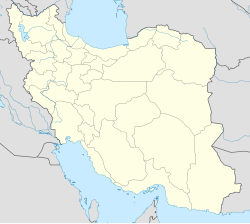블라타박테리움
Blattabacterium| 블라타박테리움 | |
|---|---|
| 과학적 분류 | |
| 도메인: | |
| 문: | |
| 클래스: | |
| 순서: | |
| 가족: | 블라타박테리아과 캄파티 2012[1] |
| 속: | 블라타박테리움 Hollande and Favre 1931 (승인된 목록 1980)[2] |
| 종. | |
| |
블라타박테리움속(Blattabacterium)은 절대적인 상호공생 박테리아의 한 속으로, 현재까지 연구된 모든 바퀴벌레 종에 서식하는 것으로 믿어지고 있습니다.[3] Mastotermes darwiniensis라는 흰개미 속의 존재는 흰개미와 바퀴벌레가 진화적으로 연결되어 있다는 것을 나중에 확인시켜주는 추측으로 이어졌습니다.[4][5]
다양성
B. cuenoti는 전통적으로 Blattabacterium 속의 유일한 종으로 간주되었으며,[6] 이는 차례로 Blattabacteriaaceae과의 유일한 속입니다.[7] 하지만, 크립토커커스속에 속하는 다른 종류의 바퀴벌레들에 의해 세 가지 새로운 종이 발견되었습니다.
- 검은곰팡이속의 붉은곰팡이속
- C. clevelandi에 있는 B. clevelandi와
- C. darwini, C. garciai, C. punctulatus 및 C. wrighti의 B. punctulatus.
고대의 (~150 My) 속은 핵심적인 대사 유전자 세트에 걸쳐 유지됩니다.[8] GTDB에 따르면,[9] 그럼에도 불구하고 이 속의 많은 변종들은 B. cuenoti에서만 약 40종의 "종"을 정의할 만큼 서열 수준에서 충분히 분기되었습니다.
게다가, 새로운 속들은 GTDB에 의해 같은 과에 할당될 것을 보증하기에 충분히 가까운 것으로 발견되었습니다: Ca. "Karelsulcia", Ca. "Uzinura", Ca. "Walczuchella".[9]
기능.
블라타박테리움은 곤충 숙주의 지방체(지방을 저장하는 복강 내 조직)의 지방 세포 안에 살고 있습니다. 질소가 빈약한 목재와 같은 식물 재료를 주로 먹고 사는 곤충에서 중요한 질소 재활용에 중요한 역할을 합니다. 곤충에서 요산은 단백질 대사의 노폐물입니다. 숙주에 의해 요산(및 장내 세균 및 곰팡이와 같은 다른 미생물 식물군)이 요소 및/또는 암모니아로 분해된 후, Blattabacterium은 이러한 생성물을 글루타메이트로 전환함으로써 질소를 재활용하고 숙주의 다른 원료를 사용하여 필수 아미노산 및 여러 비타민을 합성할 수 있습니다.[10][11] 수정되기 전에 어미의 알에 감염되어 숙주의 다음 세대에 전염되는 것으로 보입니다.[12] Blattabacterium이 숙주의 지방체 내에서 고갈되었을 때, Blattabacterium이 퓨린 대사를 조절하는 역할을 할 수 있다는 것을 보여주는 소변이 축적되었습니다.[13]
변속기
일반적으로 곤충의 내공생체는 수직으로 전달되는데, 여기서 어미는 알의 생식선을 통해 내공생체를 자손에게 전달하게 됩니다.[14] 따라서 숙주의 생식 행동을 이해하는 것은 블라타박테리움이 어떻게 전염되는지 이해하는 데 매우 중요합니다.
바퀴벌레는 블라토데아라고 불리는 매우 다양한 곤충류입니다. 바퀴벌레는 다양한 번식 행동을 보여줍니다. 대부분의 바퀴벌레는 산란을 하는데, 이는 그들이 환경 내에서 알을 낳는 것을 의미합니다. 어떤 바퀴벌레들은 산란을 하며, 부화할 때까지 어미 안에 알이 남아 있습니다.[15] 드물게 Dipoptera punctata와 같은 바퀴벌레는 생체로 관찰되었습니다. 배아는 모체 내 난자 주머니에서 발생하며, 발생 과정에서 영양분을 공급받습니다.[16]
참고문헌
- ^ Kambhampati S (2010). "Family II. Blattabacteriaceae fam. nov.". In Krieg NR, Staley JT, Brown DR, Hedlund BP, Paster BJ, Ward NL, Ludwig W, Whitman WB (eds.). Bergey's Manual of Systematic Bacteriology. Vol. 4 (2nd ed.). New York, NY: Springer. p. 315.
- ^ Hollande AC, Favre R (1931). "La structure cytologique de Blattabacterium cuenoti (Mercier) N.G., symbiote du tissu adipeux des Blattides". Comptes Rendus des Séances de la Société de Biologie (Paris). 107: 752–754.
- ^ Lo N, Beninati T, Stone F, Walker J, Sacchi L (June 2007). "Cockroaches that lack Blattabacterium endosymbionts: the phylogenetically divergent genus Nocticola". Biology Letters. 3 (3): 327–330. doi:10.1098/rsbl.2006.0614. PMC 2464682. PMID 17376757.
- ^ Zuckerman W (16 April 2011). "The secret superpower of the cockroach". New Scientist.
- ^ Lo N, Eggleton P (2011). "Termite Phylogenetics and Co-cladogenesis with Symbionts". In Bignell D, Roisin Y, Lo N (eds.). Biology of Termites: A Modern Synthesis. pp. 27–50. doi:10.1007/978-90-481-3977-4_2.
- ^ Clark JW, Kambhampati S (January 2003). "Phylogenetic analysis of Blattabacterium, endosymbiotic bacteria from the wood roach, Cryptocercus (Blattodea: Cryptocercidae), including a description of three new species". Molecular Phylogenetics and Evolution. 26 (1): 82–88. doi:10.1016/S1055-7903(02)00330-5. PMID 12470940.
- ^ Boone DR, Castenholz RW, eds. (2001). Bergey's Manual of Systematic Bacteriology. Volume 1. The Archaea and the deeply branching and phototrophic Bacteria (2nd ed.). New York: Springer-Verlag. pp. 465–466. ISBN 978-0-387-98771-2.
- ^ Patiño-Navarrete R, Moya A, Latorre A, Peretó J (2013). "Comparative genomics of Blattabacterium cuenoti: the frozen legacy of an ancient endosymbiont genome". Genome Biology and Evolution. 5 (2): 351–361. doi:10.1093/gbe/evt011. PMC 3590773. PMID 23355305.
- ^ a b "Blattabacterium Tree". Genome Taxonomy Database (GTDB). The University of Queensland. Retrieved 20 December 2022.
- ^ Sabree ZL, Kambhampati S, Moran NA (November 2009). "Nitrogen recycling and nutritional provisioning by Blattabacterium, the cockroach endosymbiont". Proceedings of the National Academy of Sciences of the United States of America. 106 (46): 19521–19526. Bibcode:2009PNAS..10619521S. doi:10.1073/pnas.0907504106. PMC 2780778. PMID 19880743.
- ^ Patiño-Navarrete R, Piulachs MD, Belles X, Moya A, Latorre A, Peretó J (July 2014). "The cockroach Blattella germanica obtains nitrogen from uric acid through a metabolic pathway shared with its bacterial endosymbiont". Biology Letters. 10 (7): 7. doi:10.1098/rsbl.2014.0407. PMC 4126632. PMID 25079497.
- ^ Carrasco P, Pérez-Cobas AE, van de Pol C, Baixeras J, Moya A, Latorre A (June 2014). "Succession of the gut microbiota in the cockroach Blattella germanica". International Microbiology. 17 (2): 99–109. doi:10.2436/20.1501.01.212. PMID 26418854.
- ^ Jahnes BC, Sabree ZL (June 2020). "Nutritional symbiosis and ecology of host-gut microbe systems in the Blattodea". Current Opinion in Insect Science. Pests and resistance * Behavioural ecology. 39: 35–41. doi:10.1016/j.cois.2020.01.001. PMID 32109859. S2CID 211565307.
- ^ Engelstädter J, Hurst GD (December 2009). "The Ecology and Evolution of Microbes that Manipulate Host Reproduction". Annual Review of Ecology, Evolution, and Systematics. 40 (1): 127–149. doi:10.1146/annurev.ecolsys.110308.120206. ISSN 1543-592X.
- ^ Hintze-Podufal C, Vetter R (1996-01-01). "Hormonal Control of Courtship Behavior and Reproductive Cycle in the Cockroach Species Blaptica dubia (Blattoidea: Blaberoidea: Blaberidae)". Entomologia Generalis. 20 (3): 169–175. doi:10.1127/entom.gen/20/1996/169. ISSN 0171-8177.
- ^ Jennings EC, Korthauer MW, Hamilton TL, Benoit JB (September 2019). "Matrotrophic viviparity constrains microbiome acquisition during gestation in a live-bearing cockroach, Diploptera punctata". Ecology and Evolution. 9 (18): 10601–10614. doi:10.1002/ece3.5580. PMC 6787804. PMID 31624569.
더보기
- Sabree ZL, Kambhampati S, Moran NA (November 2009). "Nitrogen recycling and nutritional provisioning by Blattabacterium, the cockroach endosymbiont". Proceedings of the National Academy of Sciences of the United States of America. 106 (46): 19521–19526. Bibcode:2009PNAS..10619521S. doi:10.1073/pnas.0907504106. PMC 2780778. PMID 19880743.


